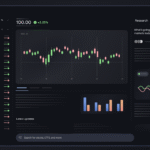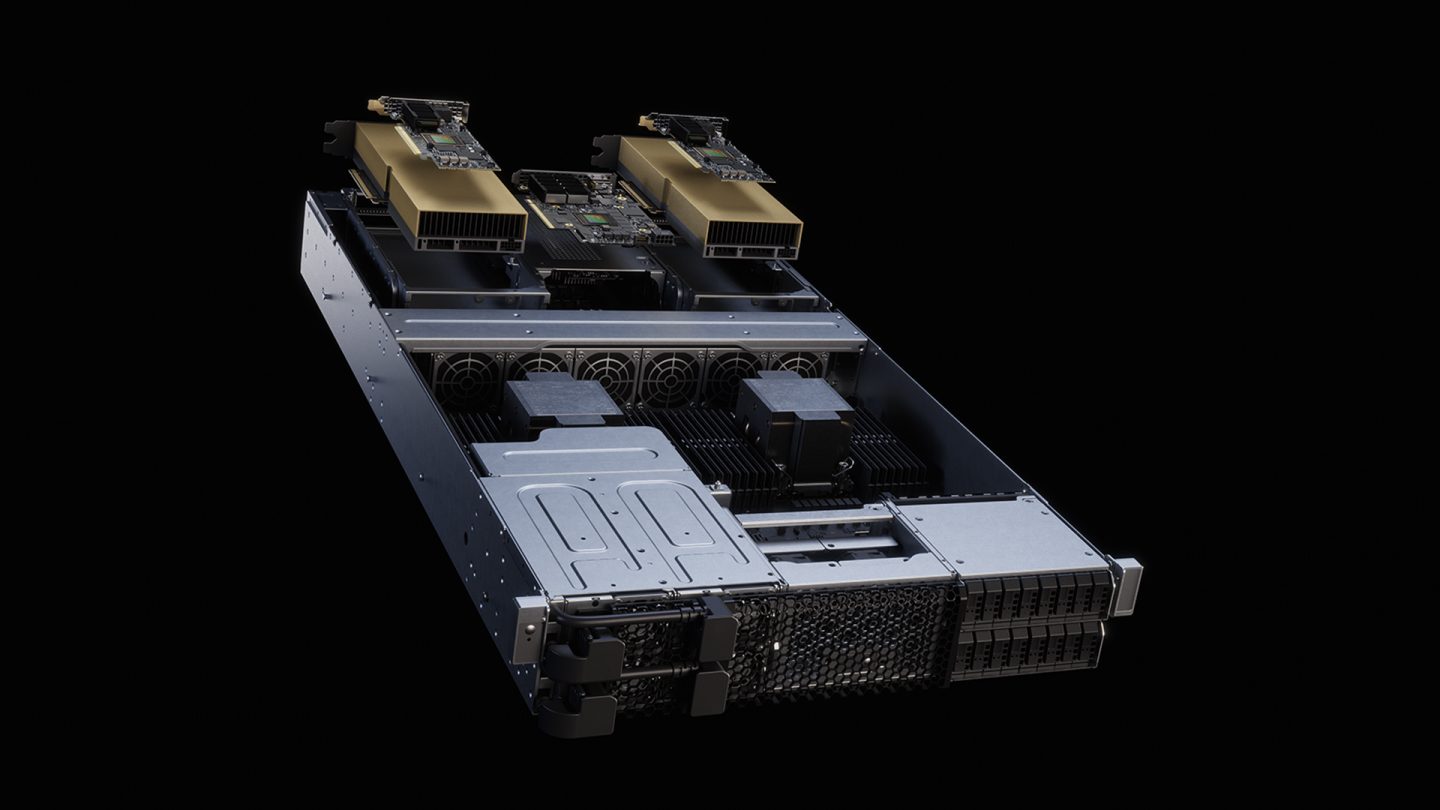NVIDIA’s latest RTX PRO 6000 Blackwell Server Edition GPU will soon be available in enterprise servers.
Systems from Cisco, Dell Technologies, HPE, Lenovo, and Supermicro will ship various configurations in 2U servers. Nvidia says they will offer higher performance and efficiency for AI, graphics, simulation, analytics, and industrial applications, and support tasks like AI model training, content creation, and scientific research.
“AI is reinventing computing for the first time in 60 years – what started in the cloud is now transforming the architecture of on-premises data centres,” said Jensen Huang, founder and CEO of NVIDIA. “With the world’s leading server providers, we’re making NVIDIA Blackwell RTX PRO Servers the standard platform for enterprise and industrial AI.”
GPU acceleration for business workloads
Millions of servers are sold each year for business operations, most still using ‘traditional’ CPUs. The new RTX PRO Servers give systems GPU acceleration, boosting performance in analytics, simulations, video processing, and rendering, the company says. NVIDIA says its Server Edition GPU can deliver up to 45 times better performance than CPU-only systems, with 18 times higher energy efficiency.
The RTX PRO line is aimed at companies building “AI factories” where space, power, and cooling may be limited. The servers also provide the infrastructure for NVIDIA’s AI Data Platform for storage systems. Dell, for example, is updating its AI Data Platform to use NVIDIA’s design; its PowerEdge R7725 servers comes with two RTX PRO 6000 GPUs, NVIDIA AI Enterprise software, and NVIDIA networking.
The new 2U servers, which can house up to eight GPU units, were among those announced in May at COMPUTEX.
Blackwell architecture features
The new servers are built around NVIDIA’s Blackwell architecture, which includes:
- Fifth-generation Tensor Cores and a second-generation Transformer Engine with FP4 precision, capable of running inference at up to six times faster than the L40S GPU.
- Fourth-generation RTX technology for photo rendering, with up to four times the performance of the L40S GPU.
- Virtualisation and NVIDIA Multi-Instance GPU technology, allowing four separate workloads per GPU.
- Improved energy efficiency for lower data centre power use.
For physical AI and robotics
NVIDIA’s Omniverse libraries and Cosmos world foundation models on RTX PRO Servers can run digital twin simulations, robot training routines, and large-scale synthetic data creation. They also support NVIDIA Metropolis blueprints for video search and summarisation and vision language models, among other tools for use in physical environments.
NVIDIA’s has updated its Omniverse and Cosmos offerings, with new Omniverse SDKs and added compatibility with MuJoCo (MJCF) and Universal Scene Description (OpenUSD). The company says this will allow over 250,000 MJCF developers to run robot simulations on its platforms. New Omniverse NuRec libraries bring ray-traced 3D Gaussian splatting for model construction from sensor data, while the updated Isaac Sim 5.0 and Isaac Lab 2.2 frameworks – available on GitHub – add neural rendering and new OpenUSD-based schemas for robots and sensors.
NuRec rendering is already integrated into the CARLA autonomous vehicle simulator and is being adopted by companies like Foretellix, which is using it for generating synthetic AV testing data. Voxel51’s FiftyOne data engine, used by automakers like Ford and Porsche, now supports NuRec. Boston Dynamics, Figure AI, Hexagon, and Amazon Devices & Services are among those already adopting the libraries and frameworks.
Cosmos WFMs has been downloaded over two million times. The software helps generate synthetic training data for robots using text, image, or video prompts. The new Cosmos Transfer-2 model speeds up image data generation from simulation scenes and spatial inputs like depth maps. Companies like Lightwheel, Moon Surgical, and Skild AI are using Cosmos have begun to produce training data at scale using Cosmos Transfer-2.
NVIDIA has also introduced Cosmos Reason, a 7-billion-parameter vision language model to help robots and AI agents combine prior knowledge and understanding of physics. It can automate dataset curation, supports multi-step robot task planning, and run video analytics systems. NVIDIA’s own robotics and DRIVE teams use Cosmos Reason for data filtering and annotation, and Uber and Magna have deployed it in autonomous vehicles, traffic monitoring, and industrial inspection systems.
AI agents and large-scale deployments
RTX PRO Servers can run the newly-announced Llama Nemotron Super model. When running with NVFP4 precision on a single RTX PRO 6000 GPU, they deliver up to three times better price performance than FP8 on NVIDIA’s H100 GPUs.
(Photo by Nvidia)
See also: Nvidia reclaims title of most valuable company on AI momentum
Want to learn more about AI and big data from industry leaders? Check out AI & Big Data Expo taking place in Amsterdam, California, and London. The comprehensive event is co-located with other leading events including Intelligent Automation Conference, BlockX, Digital Transformation Week, and Cyber Security & Cloud Expo.
Explore other upcoming enterprise technology events and webinars powered by TechForge here.
Read the full article here















